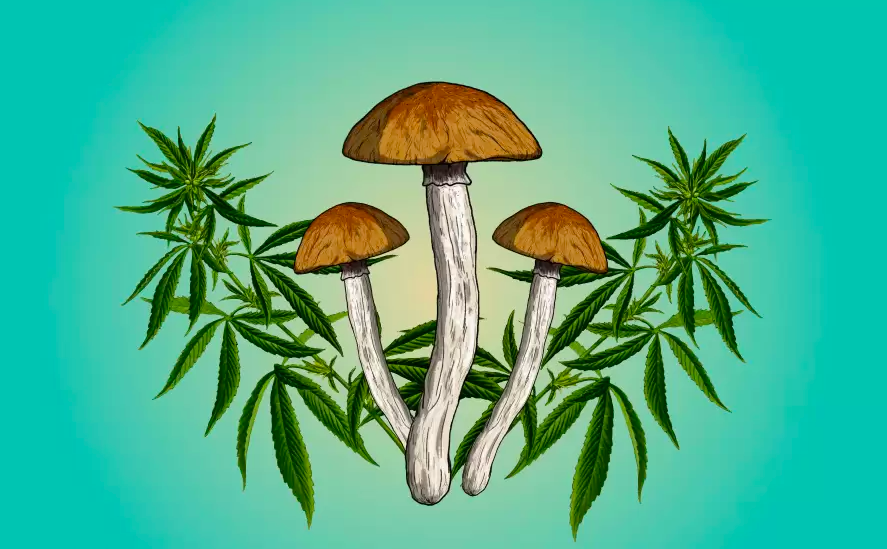Image via
Scientists and doctors may soon be able to get their hands on high-quality legal cannabis and psilocybin in order to further their research.
The US Drug Enforcement Agency (DEA) just published a notice in the Federal Register indicating that it intends to significantly increase the quantities of “schedule I substances psilocybin, psilocin, marihuana, and marihuana extract” that it will legally produce in 2021. The notice explains that this increased production is “directly related to increased interest by DEA registrants in the use of hallucinogenic controlled substances for research and clinical trial purposes.”
Last November, the DEA established its Aggregate Production Quota (APQ) for the amount of cannabis and psilocybin that could be legally produced in 2021. In this original plan, the agency set a quota for 1.5 million grams of cannabis and 250,000 grams of marijuana extract to be legally produced and made available for research. The quotas for psilocybin and psilocin, the active ingredients in magic mushrooms, were much smaller, with only 50 grams of each compound authorized for production.
On September 2nd, the DEA announced that it was planning to greatly expand the amount of weed and psilocybin that it would produce in 2021. The agency plans to increase the total amount of cannabis flower up to 2 million grams (around 4,400 pounds) and to double its quota for weed extracts to 500,000 grams.
In the notice, the DEA says that it “firmly believes in supporting regulated research of schedule I controlled substances. Therefore, the APQ increases reflect the need to fulfill research and development requirements in the production of new drug products, and the study of marijuana effects in particular, as necessary steps toward potential Food and Drug Administration (FDA) approval of new drug products.”
The agency has penciled in an even greater expansion to its shroom quotas. The APQ for psilocybin has been raised to 1,500 grams – a 2,900 percent increase over the original 50 gram limit. And the agency also plans to increase the quota for psilocin, the compound that is actually responsible for shrooms’ psychedelic effects, to 1,000 grams. The massive expansion is likely due to the fact that the FDA is currently sponsoring clinical trials that could lead to the eventual legalization of psilocybin-assisted therapy.
The APQ increases indicate a sea change in the DEA’s policies towards making quality cannabis and psilocybin available to researchers studying plant-based medicines. The feds have actually been producing legal weed for scientists since the late 1960s, but the DEA has only authorized one university to produce this government grass. Unfortunately, this university produces some of the worst weed known to humanity, and this low-THC, moldy shake has ruined several critical research trials.
The DEA promised to start licensing new cannabis growers back in 2016, but failed to follow through. Researchers sued the feds over their inaction on multiple occasions, and this spring, the DEA finally announced that it had conditionally accepted the applications of several research cannabis cultivators. It remains to be seen whether the agency will get around to granting full approval in time for these growers to help meet this year’s quota for 2 million grams of bud, though.
The DEA will be accepting public commentary about the proposed quota increases until October 4th. After receiving this commentary, the agency may hold a public hearing to further discuss the issue. Once this process is complete, the agency will post a final order adjusting its yearly cannabis and psilocybin production quotas in the Federal Register.











